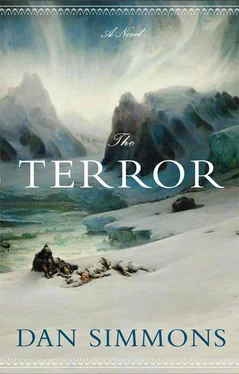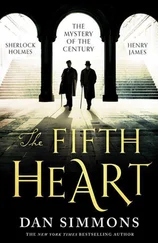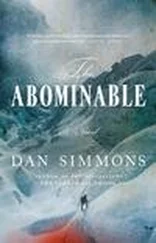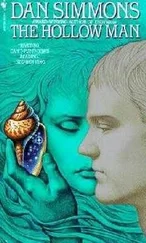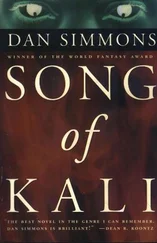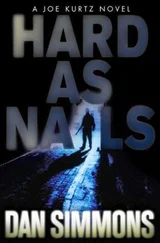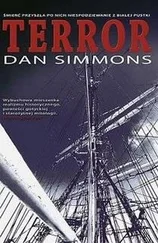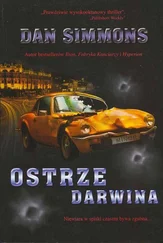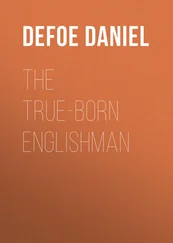Silence rights the sledge, tests the thongs and knots, puts her weight on the firmly lashed caribou antlers and short pieces of wood, and lashes the remaining antlers – two longer curved ones that had been the primary tent supports – up from the rear of the sledge to make rudimentary handles.
Then she lays several layers of sealskins and bearskins across the cross-antlers and comes to lift Crozier to his feet and help him over to the sledge.
He shakes off her arm and tries to walk to it by himself.
He has no memory of collapsing face-first into the snow, but his vision and hearing return as Silence is lifting him onto the sledge, straightening his legs, setting his back firmly against piled furs stacked against the rear antler handles, and setting several thick robes over him.
He sees that she has tied long strips of leather to the front of the sledge and woven the ends into a sort of harness that goes around her middle. He thinks of her finger-string games and sees what she had been saying – the tent (peaked oval) taken down, the two of them leaving (the walking figures in the sliding bits of string, although Crozier certainly was not walking this night), to another oval dome with no peak. (Another tent in the shape of a dome? A snow-house?)
With everything packed – the extra furs and canvas bags and hide-wrapped pots and seal-oil lamps all lying atop and around Crozier – Silence slips into harness and begins pulling them across the ice.
The runners glide with a glassy efficiency, far more silently and smoothly than the boat-sledges from Terror and Erebus . Crozier is shocked to discover that he is still warm; two hours or more of just sitting still out on the ice floe has not chilled him, except for the tip of his nose.
The clouds are solid overhead. There is no hint of sunrise on the horizon in any direction. Francis Crozier has absolutely no hint as to where the woman is taking him – back to King William Island? South to the Adelaide Peninsula? Toward Back’s River? Farther out onto the ice?
“My men,” he rasps at her. He strains to raise his voice and be heard over the wind sigh, snow hiss, and the groaning of the thick ice beneath them. “I need to get back to my men. They’re looking for me. Miss… ma’am… Lady Silence, please . For the love of God, please take me back to Rescue Camp.”
Silence does not turn. He can see only the back of her hood and the white bear ruff gleaming in the faint starlight. He has no idea how she can see to proceed in this darkness or how such a small girl can pull his weight and the sledge’s weight so easily.
They glide silently into the darkness of the ice jumble ahead.
Sedna at the bottom of the sea decides whether to send the seal up to the surface to face being hunted by other animals and the Real People, but in a real sense, it is the seal himself who decides whether to allow himself to be killed or not.
In another real sense, there is only one seal.
Seals are like Real People in that they each have two spirits – a life spirit that dies with the body and a permanent spirit that departs the body at the time of death. This longer-lasting soul, the tarnic , hides in the seal as a tiny bubble of air and blood that a hunter can find in the seal’s gut and is the same shape as the seal itself, only much smaller.
When a seal dies, its permanent spirit departs and returns in exactly the same form in a baby seal descended from the seal who has decided to allow itself to be taken and eaten.
The Real People know that a hunter, over his lifetime, will be capturing and killing the same seal or walrus or bear or bird many times over.
Precisely the same thing happens to the permanent spirit of a member of the Real People when his life spirit dies with the body. The inua – the permanent spirit-soul – travels, with all of its memories and skills intact, only hidden, to a boy or girl in the line of the dead person’s family. This is one of the reasons that the Real People never discipline their children, no matter how rowdy or even impertinent they may become. Besides the child-soul in that child, there resides an adult’s inua – a father, uncle, grandfather, great-grandfather, mother, aunt, grandmother, or great-grandmother, with all its hunter’s and matriarch’s or shaman’s wisdom – and it should not be rebuked.
The seal will not yield itself up to just any Real People hunter. The hunter must win them over, not just through his guile and stealth and skill but also through the quality of the hunter’s own courage and inua .
These inua – the spirits of the Real People, seals, walruses, bears, caribou, birds, whales – existed as spirits before the Earth, and the Earth is old.
During the first period of the universe, the Earth was a floating disk beneath a sky supported by four pillars. Beneath the Earth was a dark place where the spirits lived (and where most live to this day). This early Earth was under water most of the time and without any human beings – the Real People or others – until two men, Aakulujjuusi and Uumaaniirtuq, crawled out of humps in the earth. These two became the first of the Real People.
There were no stars in that era, no moon, no sun, and the two men and their descendants had to live and hunt in total darkness. Since there were no shamans to guide the Real People in their behavior, the human beings had very little power and could hunt only the smallest of animals – hares, ptarmigan, the occasional raven – and they did not know how to live properly. Their only decoration was to wear the occasional aanguaq , an amulet made from a sea urchin shell.
Women had joined the two men on the Earth in this earliest of times (they came from the glaciers much as the men had come from the Earth), but they were barren and spent all their time walking the coastlines staring into the sea or digging into the ground in search of children.
The Second Cycle of the universe appeared after a long and bitter contest between a fox and a raven. The seasons appeared then, and then life and death itself; shortly after the seasons arrived, a new era began in which the life spirit of human beings would die with the bodies and the inua -spirit would travel elsewhere.
Shamans learned some of the secrets of the cosmic order then and were able to help the Real People learn how to live properly – creating rules which forbade incest and marrying out of the family or murder or other behavior which goes against the Order of Things. The shamans were also able to see back even into the time before Aakulujjuusi and Uumaaniirtuq crawled out of the Earth and to explain to the human beings about the origins of the great spirits in the universe – the inuat – such as the Spirit of the Moon, or about Naarjuk, the spirit of consciousness itself, or about Sila, the Spirit of the Air, who is also the most vital of all ancient forces; it is Sila who created and permeates and gives energy to all things and who expresses her wrath through blizzards and storms.
This is also the time when the Real People learned about Sedna, who is known in other cold places as Uinigumauituq or Nuliajuk. The shamans explained that all human beings – the Real People, the redder-skinned native human beings who lived far south of the Real People, the Ijirait caribou spirits, and even the pale people who appeared so much later – were born after Sedna-Uinigumauituq-Nuliajuk coupled with a dog. This also explains why dogs are allowed to have names and a name-soul and even share their master’s inua .
The moon’s inua , Aningat, had incest with and otherwise abused his sister, Siqniq, the inua of the sun. Aningat’s wife, Ulilarnaq, loved to disembowel victims – animal or Real People – and so disliked the shamans’ meddling in spirit matters that she would punish them by making them laugh uncontrollably. To this day, the shamans may be seized by uncontrollable laughter and frequently die from it.
Читать дальше
